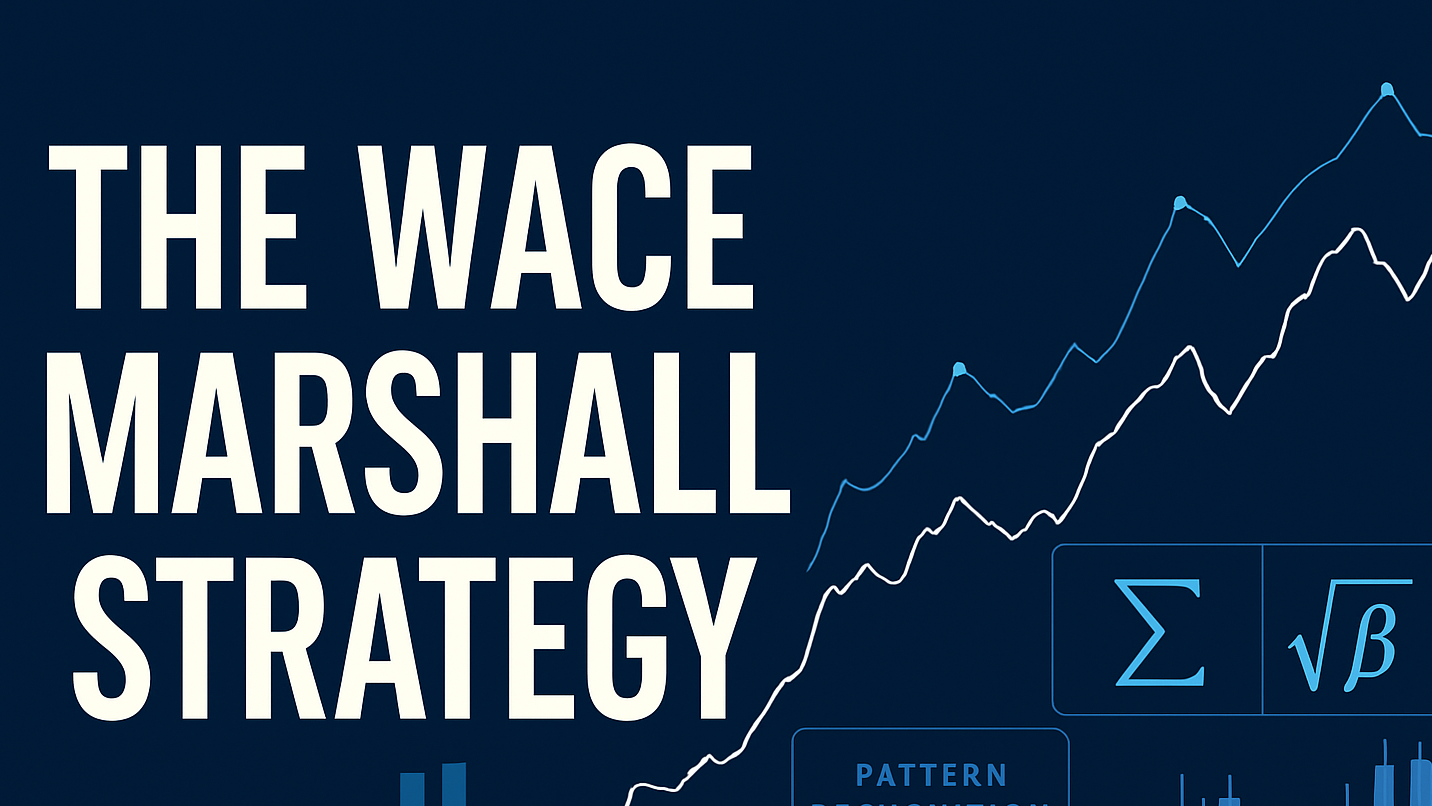Explore trading insights from a successful gold strategist, focusing on market signals, risk management, and modern tools for gold investments.
John Paulson's gold investment strategy offers timeless lessons for traders. Here's what you can learn:
- Massive Profits from Gold: Paulson's multi-billion-dollar gold bet around 2009–2011 reportedly earned about $3.1 billion as gold prices surged to an all-time high of $1,917.90 per ounce in late August 2011.
- Why Gold?: He anticipated inflation and currency risks amid aggressive Federal Reserve policies following the 2008 crisis.
- Modern Relevance: With spot gold setting fresh records above $3,500 per ounce in August 2025, Paulson's macro-driven approach remains instructive.
- Key Strategies:
- Focused on mining stocks in stable regions like Alaska and Idaho.
- Used macroeconomic signals (monetary policy, central bank gold buying) to time exposures.
- Managed risk with diversification and hedging using gold futures and options.
- Practical Tools Today: Traders can now use AI for pattern recognition, backtesting, and real-time analysis to refine strategies. See LuxAlgo’s AI Backtesting Assistant and its overview.
Paulson's disciplined approach blends research, timing, and risk management—essential for navigating volatile markets.
How Paulson Built His Gold Position
Market Conditions That Led to Gold
Paulson emphasized gold during a period of mounting economic pressures in the 2020s. By 2025, the U.S. national debt had surpassed $35 trillion, fueling concerns over long-term dollar stability. Globally, central banks collectively added 1,037 metric tons of gold in 2023, underscoring a structural shift in reserve composition.
A pivotal geopolitical moment was the freezing of Russia’s foreign reserves after its 2022 invasion of Ukraine—physical gold remained domestically held while large portions of foreign currency reserves abroad were immobilized. This episode reinforced the “outside the financial system” appeal of bullion. Learn more about frozen sovereign reserves.
These developments shaped a thesis in which gold serves as a hedge against policy risk, currency volatility, and geopolitical shocks.
Gold Investment Methods Used
Paulson favored equities over bars and coins—specifically development-stage mining assets in jurisdictions with strong rule of law. North America featured prominently in this approach.
By early 2025, public filings and company disclosures showed positions in several North American developers:
| Company | Investment Details | Strategic Rationale |
|---|---|---|
| International Tower Hill Mines | ~37% ownership stake, 70M+ shares | Alaska-based development project |
| Perpetua Resources | Largest shareholder | Idaho gold + antimony development |
| Donlin Gold Project | Joint-venture stake alongside Barrick Gold | Large-scale Alaska resource with multi-decade potential |
| Trilogy Metals | Strategic investment | Access to Alaska’s Ambler district |
This diversified approach laid a foundation for targeted selection of high-conviction projects.
Mining Stock Selection Process
As exposure grew, Paulson honed a process that emphasized development-stage projects with asymmetric upside:
"We really shifted our focus to mine development because that's where you can get your biggest bang for the buck. You don't need the gold price to go up to receive high returns."
- Prioritize stable jurisdictions with minimal geopolitical risk.
- Favor clear permitting paths and consistent regulatory frameworks.
- Target high-grade deposits and competitive all-in costs.
- Seek meaningful expansion potential via resource growth or processing improvements.
The Donlin Gold project is a case in point, with very large in-ground resources and long-life optionality. (Estimates vary by study and market conditions.)
"Other minerals are a whole different world, so we're concentrating our efforts in gold."
For traders, this framework translates to focusing on quality assets, jurisdictional strength, and cost discipline.
Trading Rules from Paulson's Strategy
Reading Economic Signals
Paulson’s playbook leans on macro signals that influence gold:
| Signal Type | Key Indicators | Impact on Gold |
|---|---|---|
| Monetary Policy | Federal Reserve policy, real rates | Drives opportunity cost of holding gold |
| Currency Trends | Dollar strength via the U.S. Dollar Index (DXY) | Often inversely correlated with gold |
| Central Bank Activity | Reserve diversification & purchases | Supports long-term demand |
One standout tailwind has been sustained central-bank buying, part of the reason prices set new records in 2025. Intra-year peaks exceeded $3,500 per ounce.
"As central banks and people look to put their money in a more stable source... I think gold will increase its position in the world." – John Paulson
Risk Management Methods
Downside control is central to the thesis:
-
Adjust Position Size to Volatility
Volatile regimes can amplify swings; scaling size with volatility metrics helps smooth risk. See ATR-based sizing and ATR stop-loss methods. -
Diversification
Spreading exposure across regions/projects reduces idiosyncratic risk. Review principles in disciplined risk management. -
Hedging with Derivatives
Options/futures can offset adverse moves. Learn the product landscape via CME Gold futures.
With safeguards in place, entries and exits can be timed with more conviction.
Entry and Exit Timing
Paulson’s timing framework blends fundamentals with price behavior:
- Track macro drivers and company fundamentals.
- Validate narratives through trend and momentum.
- Scale in gradually to avoid poor fills and event risk.
Historically, this discipline contributed to outsized gains during the 2010–2011 bull run.
Higher Inflation Leads to High Gold Prices, Says Paulson
Trading Tools for Gold Markets
With daily trading volumes exceeding $140 billion in gold markets, traders can leverage modern analytics to extend Paulson’s methodical edge. Explore LuxAlgo’s AI Backtesting (the platform at luxalgo.com/backtesting) and its strategy-fetching workflow.
AI Testing for Gold Trades
AI-driven research helps uncover relationships between macro indicators and price action, quickly validating ideas before committing capital.
Here’s a look at core features often found in modern platforms:
| Feature | Function | Benefit |
|---|---|---|
| Pattern Recognition | Detects recurring trends and structures | Assists in forecasting potential shifts |
| Real-time Adaptation | Responds to economic/geopolitical changes | Enables swift reactions to new data |
| Historical Backtesting | Simulates strategies using past data | Helps validate ideas before live risk |
To go deeper, review AI Backtesting documentation and related tools in LuxAlgo’s Library.
Timeframe Analysis Methods
Multi-timeframe context is vital for execution and risk. Start with this guide on timeframe selection. Momentum and volatility tools—like the RSI and Bollinger Bands—can help refine entries and exits.
Liquidity often peaks during the London and early New York sessions; align your routine with exchange trading hours if you trade futures.
Position Size Calculations
Position sizing is a first line of defense. Many traders cap exposure to 1–2% of capital per trade, then scale by volatility using the Average True Range (ATR). For complementary methods, see ATR stop-loss strategies.
For example, a trader with a $10,000 account risking 1% per trade and a 50-pip stop might size approximately 2 mini lots in FX (illustrative). Always adapt to the instrument’s tick value and volatility.
Pair volatility tools with signal quality checks—e.g., RSI entry mechanics—and study band-based tactics like fade vs. break. For a wider view of volatility envelopes, see band indicators explained, and for volume-driven setups consider VWAP entries.
Conclusion
John Paulson's approach to gold trading offers a practical blueprint: research macro drivers, own quality assets, and control risk. Gold set a series of record highs in 2025—including late-February spikes near $2,950 and fresh peaks above $3,500 over the summer—highlighting how policy, currency, and geopolitics can reprice the metal quickly.
Yet drawdowns happen: even gold-focused funds can face deep slumps. Flexibility and disciplined risk management separate durable processes from lucky streaks. Today’s traders can blend classic principles with modern analytics—backtesting ideas via AI Backtesting and refining execution with tools from the timeframe, momentum, volatility, and volume playbooks.
As Paulson put it:
"Nothing is right in all markets at all times... Our goal is not to outperform all the time – that's not possible. We want to outperform over time".
FAQs
How did John Paulson's focus on mining stocks in politically stable regions contribute to his success in gold trading?
John Paulson's success in gold trading can be largely attributed to his focus on mining stocks in politically stable regions, particularly in North America. By concentrating on areas with dependable regulatory systems and well-established mining infrastructure, he managed to minimize operational risks while boosting the profitability of his investments.
This approach helped him sidestep the unpredictability that often comes with geopolitical instability, allowing him to capitalize on rising gold prices. For example, his interest in large Alaska developments underscores a preference for regions where operations can maintain efficiency and profitability even during turbulent market conditions. By prioritizing stability, Paulson achieved strong returns while keeping risks under control.
How do macroeconomic trends influence the timing of gold investments in John Paulson's strategy?
Macroeconomic trends play a central role in timing. Key factors include central banks increasing gold reserves, currency cycles reflected in the DXY, and real-rate shifts driven by policy. Watching these helps investors align entries with durable tailwinds.
How can AI tools improve gold trading strategies inspired by John Paulson?
AI tools accelerate research by scanning vast datasets, testing hypotheses in minutes, and adapting to new information. This complements Paulson-style macro work. For practical workflows, explore LuxAlgo’s AI Backtesting and the strategy-fetching docs.
References
LuxAlgo Resources
- AI Backtesting Assistant
- AI Backtesting Assistant — Introduction
- AI Backtesting Assistant — Fetching Strategies
- Historical Correlation (Library)
- Market Structure & Volume Distribution (Library)
- The Best Indicator Settings & Timeframes
- Risking It Right: Managing Trade Risk
- RSI Indicator: Basics & Rules
- RSI Entry Signals — How They Work
- Bollinger Bands: Squeeze then Surge
- Bollinger Band: Fade vs. Break
- Average True Range: Dynamic Stops
- 5 ATR Stop-Loss Strategies
- Band Indicators: Volatility Explained
- VWAP Entry Strategies for Day Traders
External Resources
- Gold Prices During and After the Great Recession (BLS)
- Gold Prices Hit Fresh Records in 2025 (Business Insider)
- Central Bank Gold Purchases — 2023 (World Gold Council)
- U.S. Debt Surpasses $35 Trillion (Yahoo Finance)
- Frozen Russian Central Bank Assets (Overview)
- U.S. Dollar Index (DXY) Explained (Investopedia)
- CME Gold Futures — Product Overview
- Exchange Trading Hours (CME Group)








